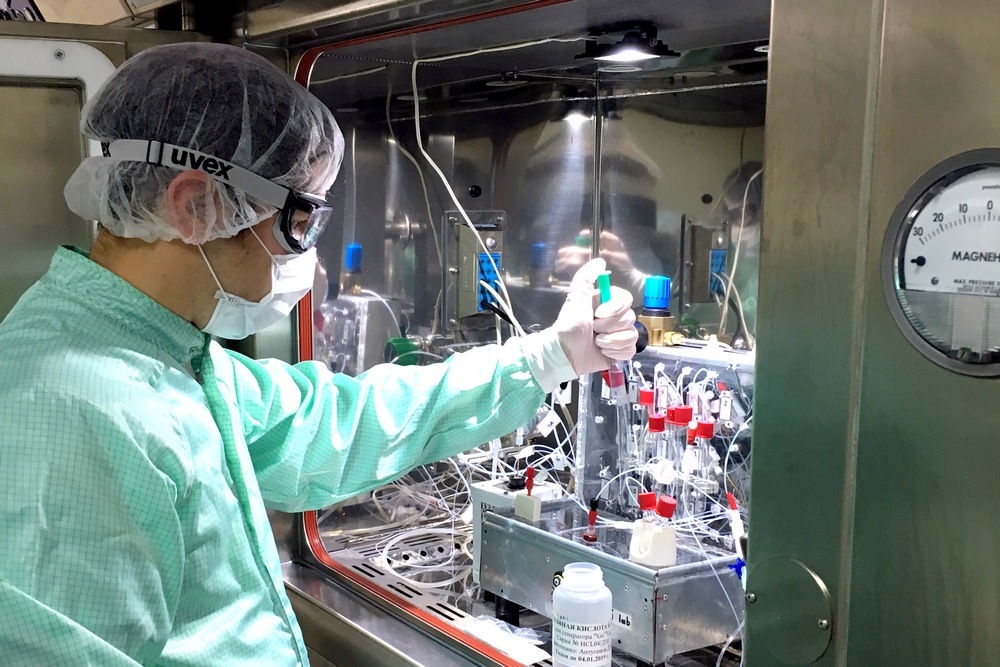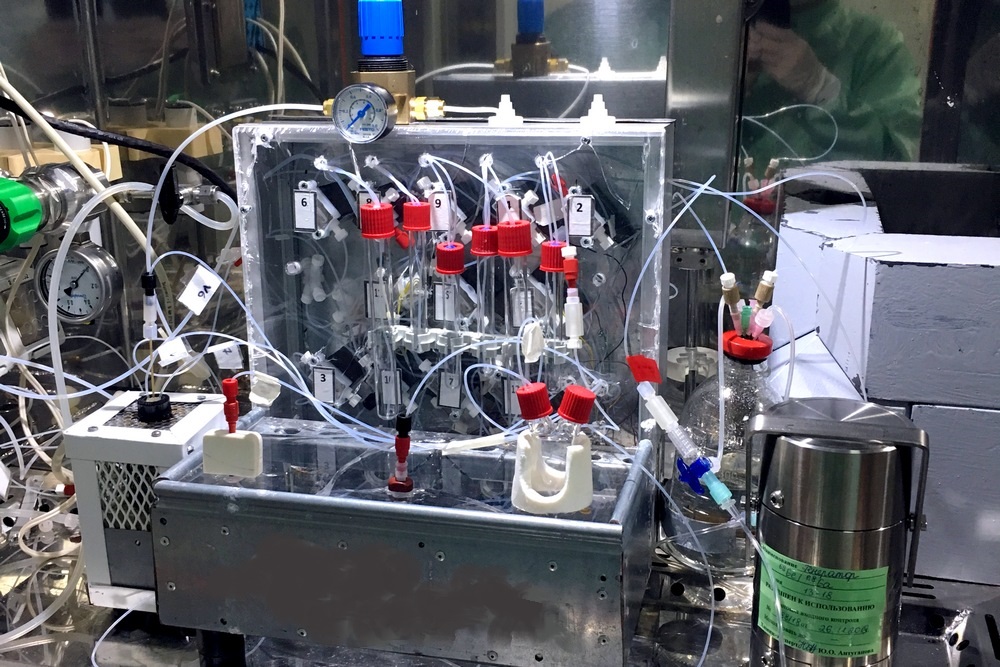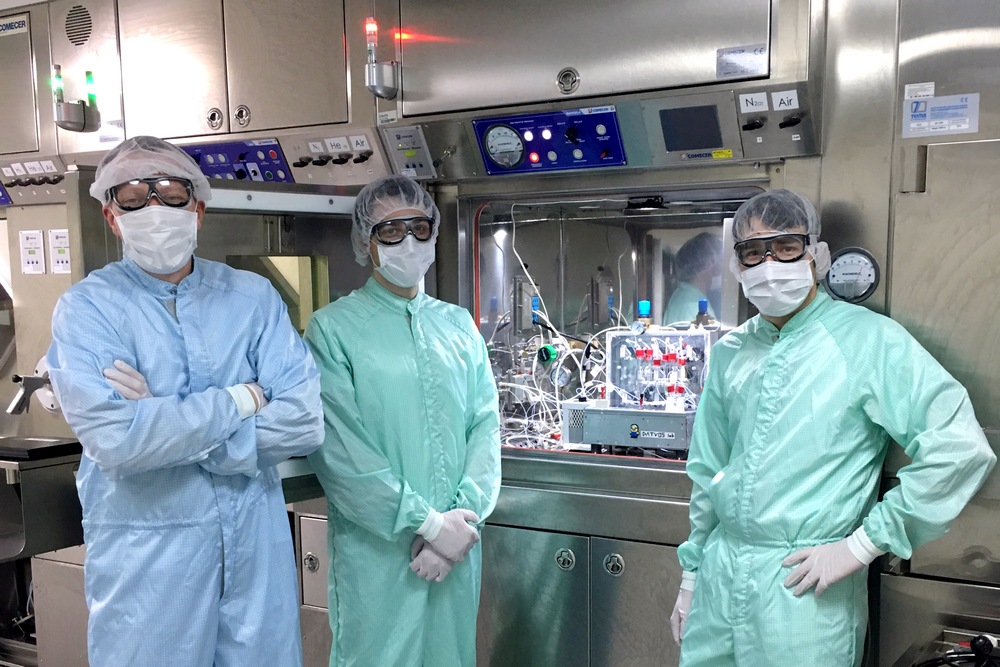
Positron emission tomography (PET) is an imaging technique that uses chemical compounds labeled with radionuclides – radiopharmaceuticals. The spatial distribution of radiopharmaceuticals introduced into the body is used to determine the functional state of organs and tissues.
PET is highly effective at detecting cancer, neurological disorders and heart conditions. This method can help detect abnormalities at a very early stage, when the cure rate is high.
Radiopharmaceuticals are produced at the radiopharmaceutical production department using specialized devices – synthesis modules. Each isotope has its own synthesis module, because incorporating an isotope into a molecule suggests specific chemical reactions based on the particular properties of a certain radioactive element.

The radiologists from the Radioisotope Imaging and PET Department determine which radiopharmaceutical is most effective for diagnosing various diseases and different histological types of malignant tumors.
The essential radiopharmaceuticals include a line of 68Ga-labeled compounds: 68Ga-PSMA (prostate cancer), 68Ga-DOTA-NOC, 68Ga-DOTA-TATE (neuroendocrine tumors). For the radiochemical synthesis of this group of drugs, an automated module was necessary to ensure a consistently high production and the proper quality of the final radiopharmaceutical.
The specialists of the quality control department at Almazov Centre have not only reproduced the analytical methods established in the Pharmacopoeia but also developed their own ones. The ability to determine the quality of a drug by different methods prevents stopping the production of radiopharmaceuticals due to the failure of analytical equipment.

The specialists of the Research Department of Nuclear Medicine and Theranostics at the Institute of Oncology and Hematology headed by Chief Researcher Daria Ryzhkova faced the task of developing a method for radiopharmaceutical production. At that time, the scientists did not have an equipment for synthesis. Having weighed the pros and cons of the existing commercial equipment, they decided to make their own.
Their hard work resulted in the successful creation of a synthesis module. The synthesis methods of all the required radiopharmaceuticals were sequentially adapted, and by now the module has already been introduced into the production of drugs for clinical practice and research. In total, more than 300 series of various 68Ga-radiopharmaceuticals have been produced. The use of radiopharmaceuticals produced with this synthesis module made it possible to not only help patients, but also conduct research presented in the articles of scientific journals.
